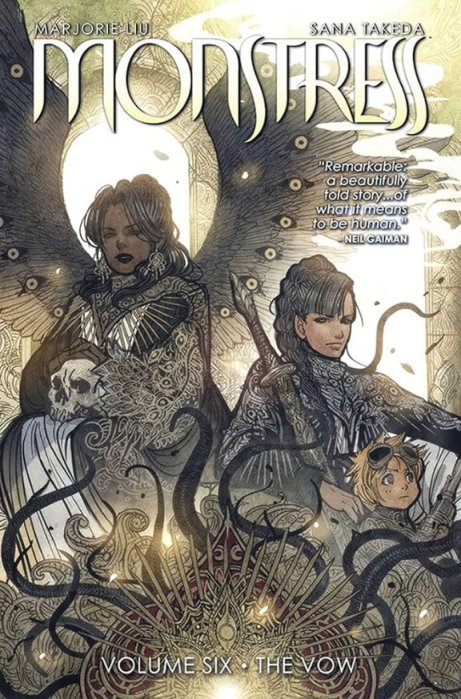The England of the 1980s wasn’t exactly a cheerful place (hello, Mrs. Thatcher). But Alan Moore anticipated that it will be even less cheerful in the future — although in hindsight, the nightmare vision of complete fascism seems a bit exaggerated. Anyway, the main message of “V for Vendetta,” which essentially says, “Fascism is bad, mmkay?” remains relevant forever. However, the other essential part of the message, which claims, “Anarchy is good, mmkay?” not so much.
V, the vengeance-seeking vigilante with a Guy Fawkes mask, sets out to dismantle the system like a crazy kid smashing a snowball, increasing your satisfaction with the repugnant demise of the dictatorship’s revolting figures in the opening chapters. For a while. Then you start to worry that okay, okay, but this is a bit one-dimensional, when the detective subplot intensifies and the mystery factor briefly elevates the whole thing, and you REALLY start to wonder who this immensely theatrical character behind the mask really is:
A mad genius, a master strategist, a bulletproof martial artist, and the luckiest guy alive, who’s good at EVERYTHING? Untouchable by anyone? Yes. And that’s precisely what diminishes the enjoyment of “V for Vendetta.” The many evil bastards are no match for V. The outcome of the game cannot be in doubt.
In the final third of the comic, as V’s master plan reaches its climax, and you observe the machinations of the insignificant, petty side characters, you might start to grow weary of the whole shebang. Especially when you realize that they’re all chess pieces on V’s board. Sometimes, unfortunately, you can’t even distinguish one from another due to the blurred, faded drawings. These drawings, however, provide an excellent BACKGROUND for the dark, gray, oppressive England, where radioactive ash falls from the sky, and Nazi propaganda blares from the speakers.
Regarding Detective Finch’s case, the grand plan stretches the bounds of credibility, as it’s highly unlikely for a drugged, deranged individual to stumble exactly where you cleverly calculated. Likewise, it’s highly debatable whether the most suitable person for the task is the one you’ve prepared for it.
According to Alan Moore’s philosophy, there are two types of anarchy: destructive, which breaks down the undeserving system, and constructive, which ideally follows afterward — during which people take control of their destiny. Now that’s something you really wouldn’t want to bet heavily on. It is highly likely, however, that these upstanding citizens, in the midst of constructive anarchy, would trample over each other’s heels to rally under the banner of the first nauseating figure promising them a “brighter future”.
6.5/10
V for Vendetta by Alan Moore & David Lloyd (Illustrator)
296 pages, Hardcover
Published in 2005 by Vertigo









